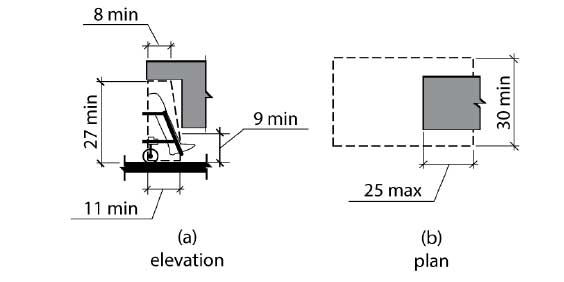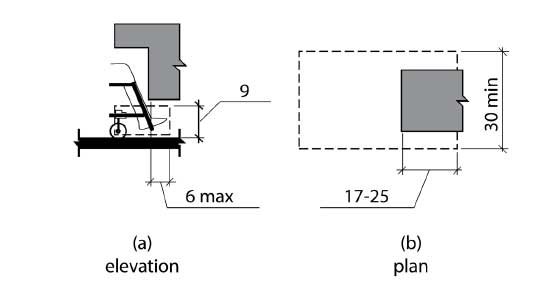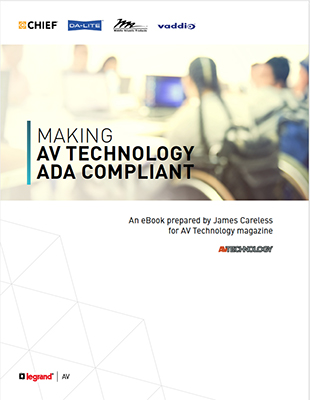Posted on 7/31/2019 by Legrand AV Team
Imagine being in a wheelchair, rolling up to a lectern, and wham! Your knee hits a metal box concealed under the lectern. Your clothes get caught on a piece of equipment and rips. As you pull back, a cable gets hooked on you and you accidentally damage the system. You become a stew of pain, aggravation and frustration.
Accessibility isn’t just about access. It’s about safety.
For these reasons, ADA Section 306 covers ‘knee and toe clearance’ for:
- Keyboard trays/drawers
- Cable management systems or cable trays
- Under-table-mounted AV equipment i.e. projectors
- Underside of table boxes and power/charging boxes
Knee Clearance
Any space under a working surface between 9 inches and 27 inches above the floor/ground falls within the ADA’s knee clearance specification. This space should extend at least 11 inches deep at 9 inches above the floor, and at least 8 inches by the time the space gets up to 27 inches high. (The maximum knee clearance at 9 inches in height is 25 inches.) For every 6 inches the knee clearance goes above the original 9 inches minimum height, the knee clearance can be reduced by 1 inch in depth (Figure 5).
In all cases, the width for knee clearance has to be 30 inches or more.

Toe Clearance
The area between the floor and the first 9 inches above “shall be considered toe clearance,” according to ADA Section 307. Beyond that, the space is in the knee-clearance zone.
The minimum toe clearance depth (under a desk, for instance) is 17 inches, up to a maximum of 25 inches. As with knees, the minimum width for toe clearance is 30 inches (Figure 6).
And this is worth knowing: “Space extending greater than 6 inches... beyond the available knee clearance at 9 inches ... above the finish floor or ground shall not be considered toe clearance,” according to ADA Section 307.

What this means for AV
“All these specifications must be met after any AV boxes, added keyboard trays/drawers, cable trays, and anything else have been mounted underneath a work surface,” said Mike Tomei, CTS-D/I, owner of Tomei AV Consulting LLC. “The word to be stressed here is ‘after.’ You must provide adequate knee and toe clearance to be ADA compliant.”
Knee and toe clearance guidelines are just one part of the ADA that can affect AV design. Get a fuller picture of designing for ADA compliance with the Legrand | AV ebook.


 All News
All News